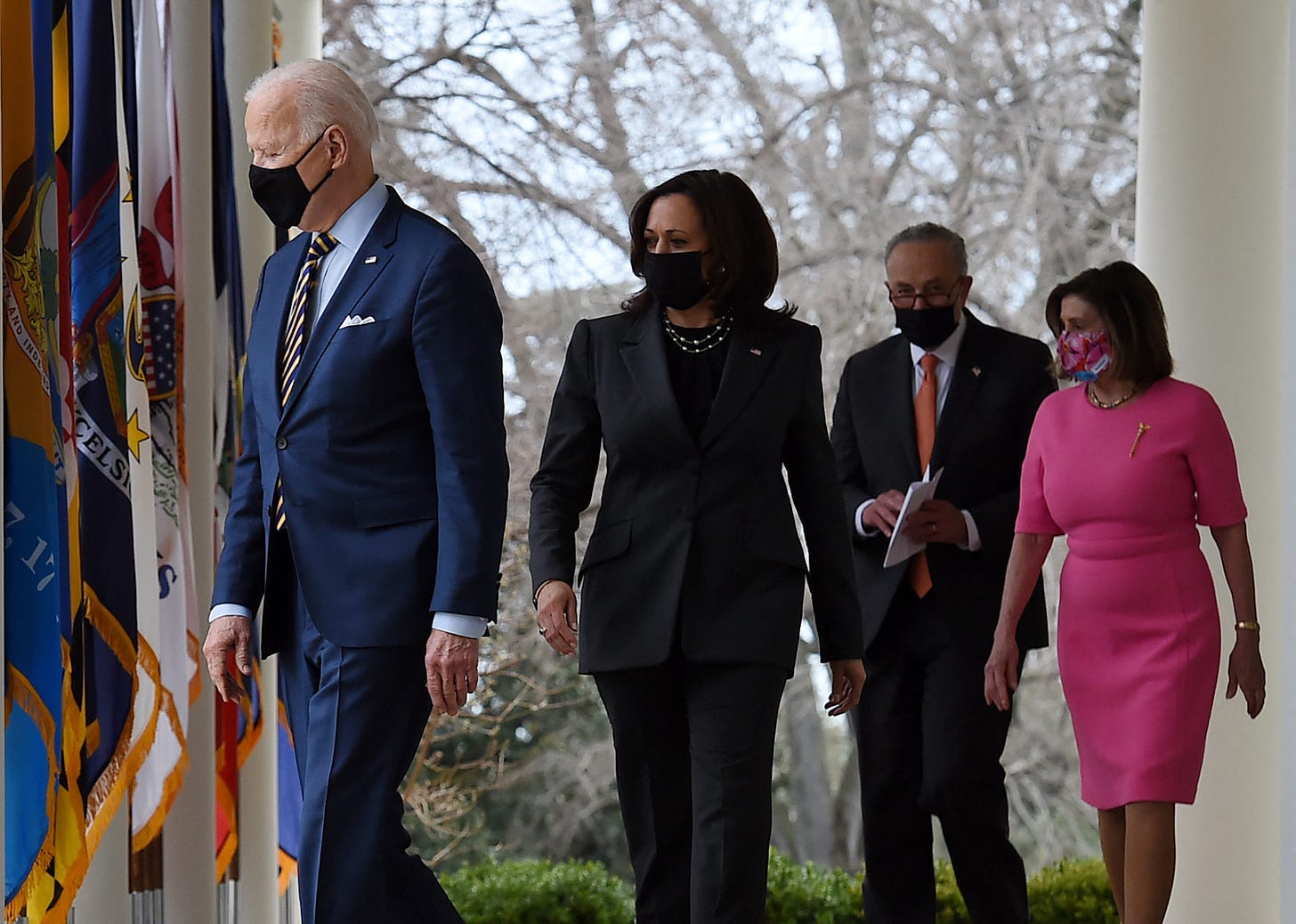Joe Biden Just Fixed Obamacare’s “Subsidy Cliff”
The American Rescue Plan isn’t just about COVID relief. It also solves one of Obamacare’s lingering problems.

Most coverage of Joe Biden’s American Rescue Plan (ARP) focuses on the $1,400 checks Americans are getting as we speak. But buried in the plan is a provision that should help ordinary citizens pay for their health care. Because for the next two years (at the very least), the ARP will get rid of what Obamacare critics refer to as the “subsidy cliff.”
The subsidy cliff is the reason many middle-class Americans thought that Obamacare was good for those less well off, but left them out in the cold.
In the Affordable Care Act as originally passed, public subsidies for private market purchase health care weren’t part of the plan for people making more than 400 percent of the federal poverty level. Translation: No help for individuals making $51,000 and above; couples making $68,960 or more; or a family of four making more than $104,800.
The American Rescue Plan caps any health care payment at 8.5 percent of income and makes up the difference with a federal subsidy. Which will means significant reductions in healthcare costs for middle-class Americans over the next two years. It will likely culminate with Biden pushing this policy to become permanent part in 2023.
And daring Republicans to object.
How much will these savings be? For many people, they’ll be a lot more than the $1,400 stimulus checks.
These numbers are based on the national health care payment averages and could be different in different states:
For a 60-year-old making $55,000 who has health care now, the current monthly payment for the benchmark silver plan averages $887 a month. The new plan reduces that cost to $390 a month with the federal subsidy—a savings of almost $6,000 a year.
For a 60-year-old couple making a combined $75,000 a year, they’re paying $1,920 a month now. Under the ARP that will drop to $531—a savings of about $1,400 a month and $16,000 a year.
A family of four with an income of $120,000 will save $595 a month, which translates to about $7,000 a year.
The new subsidy doesn’t just help those near middle-age. A 40-year-old making $55,000 will save about $800 a year while a 27-year-old making the same amount will save about $300 a year.
The Kaiser Family Foundation estimates that about 8 million people are currently buying unsubsidized plans and paying full-price for the Affordable Care Act. An estimated 3.4 million people didn’t have the insurance because of this subsidy cliff, which ruled that they made too much money to qualify for help.
What Biden has done here is simple in theory, but hard to execute: He has answered voters who say their health care premiums are too high by giving them a check to lower the cost.
At the same time he has set the table so that for the next two elections Democrats can point out that not one single Republican in Congress voted for a bill which gave a $2,800 in stimulus check and $32,000 in healthcare savings (over two years) to a 60-year-old couple living in, say, North Carolina.
If Republicans want to argue that they had to voted against the American Rescue Plan because of their deeply-held convictions on fiscal responsibility—or because they’re super-duper worried about socialism—the public will likely consider that more nonsense. Voters don’t listen to that when the money is in their bank account.
Also, because some red states haven’t participated in Medicaid expansion (the stimulus bill offers a carrot to states for this), the health care savings from ARP will be smaller in some states than others.
For example, the 60-year-old in California making $55,000 a year will save $176 a month. The savings are relatively small in other blue states like Massachusetts ($229), New York ($207), and Colorado ($356) as well.
But that same aged person in North Carolina will save $705 a month; in Pennsylvania $537 a month; in Florida $578 a month; in Wisconsin $580 a month; in Georgia $576 a month; in Texas $527 a month; and in Arizona $535 a month.
Matt Gaetz said on Fox News last week that when Kamala Harris shakes Joe Biden’s hand “she’s checking his pulse.”
But someone in Sleepy Joe’s policy orbit has been paying attention, because there are about 25 million people employed in the 55-64 age group. The average yearly pay for those folks is about $58,000. Which means a large percentage of them will get big savings on their health care costs over the next two years, for sure.
The GOP can joke about checking Biden’s pulse. But the old man has been paying attention to what voters actually care about. Maybe Matt Gaetz can explain to Floridians why he doesn’t think people in their early 60s shouldn’t save $7,000 a year on their health insurance.
Good luck with that.



